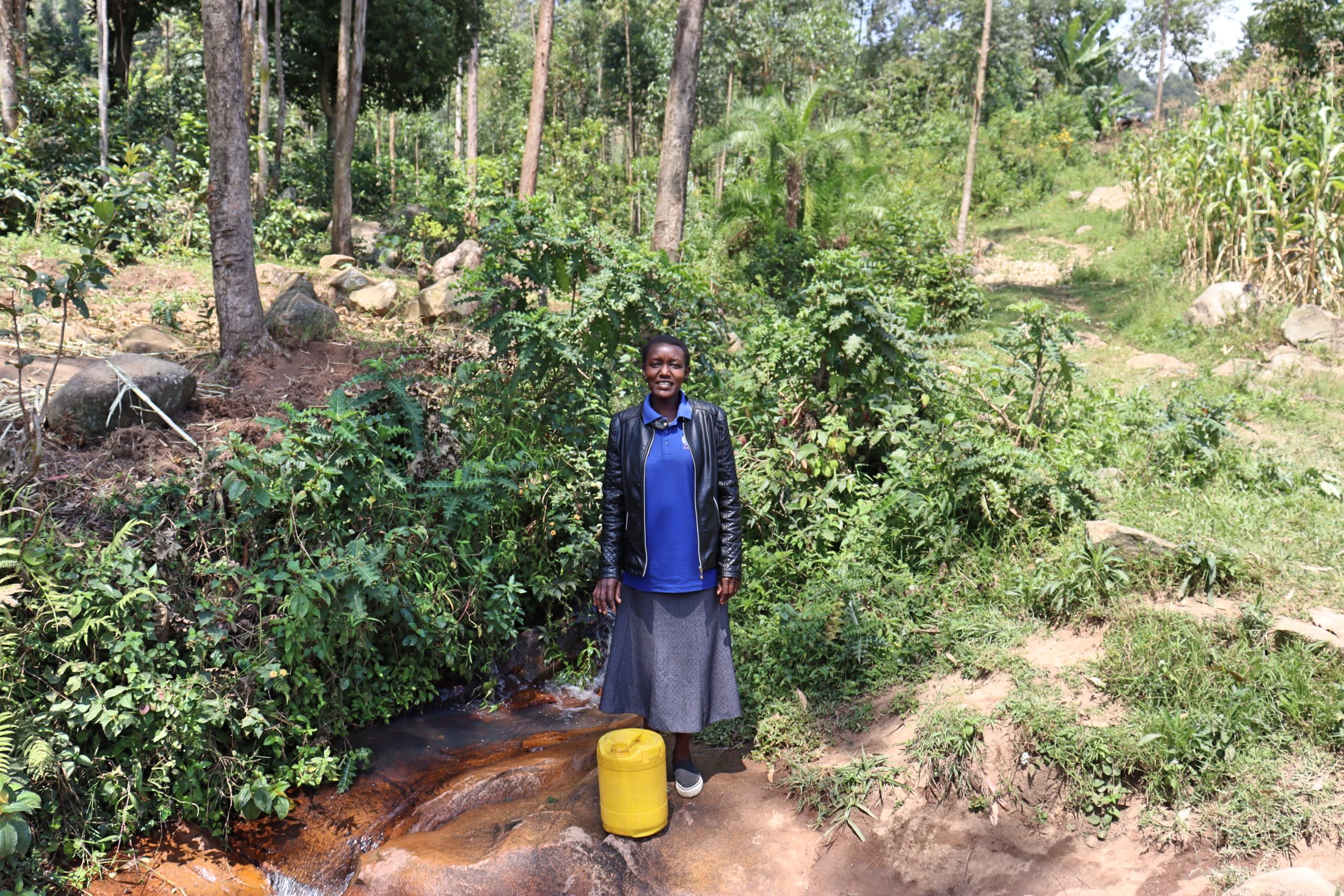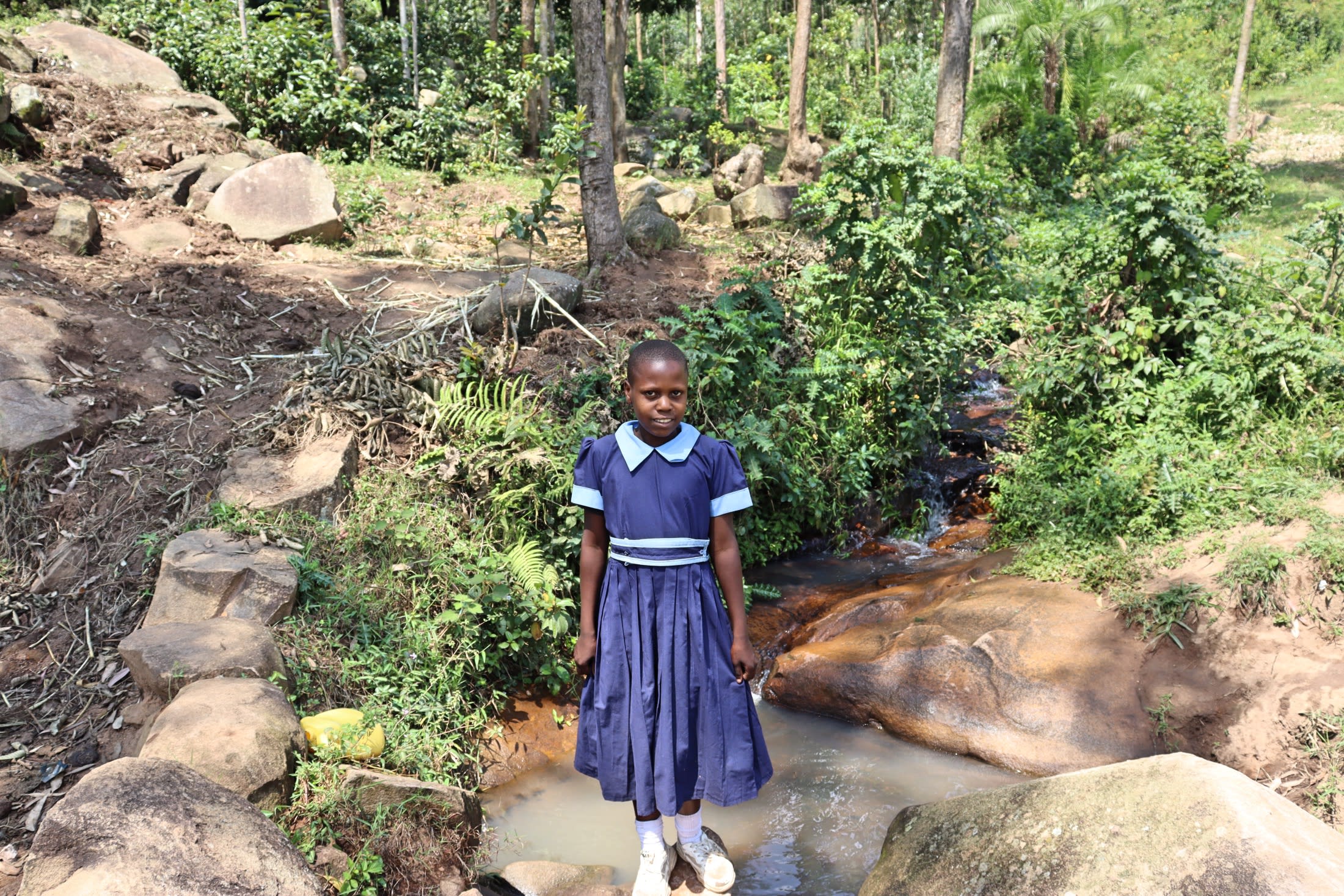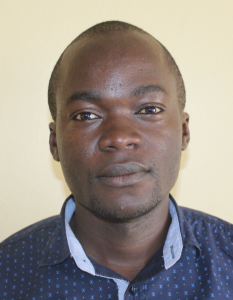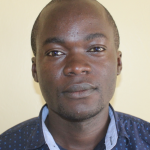The 345 students and staff of Mukisangula Primary School don't have a water source available to them. Instead, they hike far off school grounds to collect water from an unprotected spring and another that was once protected but has since fallen into disrepair.
This means that the students spend most of their school day off of school grounds collecting water that makes them sick and doesn't even meet their essential needs.

"Since the pupils take a lot of time going to the stream, [this] leads to delayed syllabus coverage," said teacher Syphress Wekesa (shown below at one of the water sources). "Also, this leads to low concentration in class because pupils keep on thinking about how to get water the next minute."

"Since the water point is far away from the school, it wastes [our] time for revisions (studying), hence leading to poor performance," said Winchester (shown below).

No one in the school has enough water for their needs. Students don't have enough water to drink, the school cook can't make meals, and no one can clean the classrooms or latrines regularly. All of this affects everyone's health long-term.
“There is a basic human physiological requirement for water to maintain adequate hydration and an additional requirement for food preparation. There is a further requirement for water to support hygiene, which is necessary for health.” - WHO Guidelines for Drinking Water
"The water sources are open for all waste products to get in, thus causing contamination," said our field officer, Victor. "[The sources are] also hard to access due to the lack of stairs, and also [they don't yield] enough for the entire school population due to water level reduction during the dry season."
A borehole on school grounds will give back all the wasted time and lost health that these students have been missing for so long.
What We Can Do:
New Well
We conducted a hydrogeological survey at this school and the results indicated the water table beneath it is an ideal candidate for a borehole well. Due to a borehole well's unique ability to tap into a safe, year-round water column, it will be poised to serve all of the water needs for this school's large population, even through the dry months.
The school will help collect the needed construction materials such as sand, rocks, and water for mixing cement. They will also provide housing and meals for the work team, in addition to providing local laborers. We will complement their materials by providing an expert team of artisans and drilling professionals, tools, hardware, and the hand-pump. Once finished, water from the well will then be used by the school’s students and staff for drinking, handwashing, cooking, cleaning, and much more.
Handwashing Stations
The student health club will oversee the two new handwashing stations we will provide, and make sure they are kept clean and in working condition. The club leaders will fill the handwashing stations with water daily and make sure they are always supplied with a cleaning agent such as soap or ash.
VIP Latrines
We will construct two triple-door latrine blocks using local materials that the school will help gather. Three doors will serve the girls and three doors will serve the boys. All of these new latrines will have cement floors that are designed to be easy to use and to clean. And with a borehole right on school property, there should be enough water to keep them clean.
Training on Health, Hygiene, COVID-19, and More
We will hold a one-day intensive training session with students, teachers, and parents. This training will cover a wide range of topics including COVID-19 symptoms, transmission routes, and prevention; personal and environmental hygiene; and the operation and maintenance of the borehole, latrines, and handwashing stations. There will be a special emphasis on handwashing.
Our team of facilitators will use a variety of methods to train, including participatory hygiene and sanitation transformation, and asset-based community development. We will initiate a student health club, which will prepare students to lead other pupils into healthy habits at school and at home. We will also lead lectures, group discussions, and provide illustrative handouts to teach health topics and ways to promote good hygiene practices within the school including handwashing and water treatment. We will then conduct a series of follow-up trainings before transitioning to our regularly scheduled support visits throughout the year.
We and the school strongly believe that all of these components will work together to improve standards at this school, which will help lead to better student academic performance and will help unlock the opportunity for these students to live better, healthier lives.





 Borehole Well and Hand Pump
Borehole Well and Hand Pump
 Rehabilitation Project
Rehabilitation Project
































